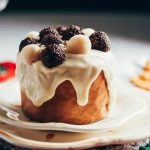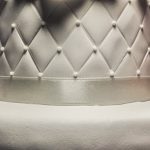Are you looking to learn how to decorate chiffon cake? Chiffon cake, with its light and airy texture, offers a perfect canvas for creative and beautiful decorations. From simple frosting techniques to elaborate designs, there are endless possibilities for decorating this delicate dessert. In this article, we will explore the art of chiffon cake decorating, from essential tools and ingredients to advanced decorating ideas and troubleshooting common issues.
Chiffon cake has been a beloved dessert since its creation in the 1920s by Harry Baker. Its unique method of preparation, which includes oil and whipped egg whites, gives it a moist and fluffy texture that sets it apart from other types of cakes. Decorating a chiffon cake adds an extra layer of charm and allure to this already delightful treat.
Decorating a chiffon cake requires a few key tools and ingredients, such as piping bags, frosting spatulas, edible decorations, and vibrant food coloring. Choosing the right recipe is also crucial for successful decoration – certain flavors and textures work best with specific decorating techniques. We will discuss all these aspects in detail throughout this article.
Whether you are a beginner or seasoned baker seeking new inspiration, this article will provide valuable guidance on enhancing your chiffon cakes with visually stunning decorations. So let’s dive into the world of chiffon cake decorating.
Essential Tools and Ingredients for Chiffon Cake Decorating
Decorating a chiffon cake can be an enjoyable and creative experience, but having the right tools and ingredients is essential for a successful outcome. Whether you’re a beginner or have some experience in cake decorating, having the necessary equipment and ingredients will make the process easier and more enjoyable.
List of Necessary Tools and Utensils
To start decorating your chiffon cake, you will need basic tools such as offset spatulas for spreading frosting, a turntable for easy frosting application, and piping bags and tips for creating designs. Additionally, investing in a good quality cake stand or pedestal will not only make it easier to work on your cake but also provide an elegant way to showcase your finished product.
Other essential tools may include a cake leveler for even layers, an icing smoother for neat finishes, and a variety of decorating combs for textured designs.
Key Ingredients Needed for Decorating
In addition to the basic baking ingredients needed to make the chiffon cake itself, you will also need specific items for decorating. This includes various types of frosting or icing such as buttercream, fondant, or royal icing depending on the desired effect.
Additionally, food coloring gels or powders can add vibrant colors to your decorations while flavored extracts can enhance the taste of your frosting. Edible decorations such as sprinkles, edible flowers, or chocolate shavings can also elevate the visual appeal of your chiffon cake.
By ensuring that you have all these essential tools and ingredients at hand before you start decorating your chiffon cake, you’ll be setting yourself up for success in creating a visually stunning and delicious masterpiece.
Choosing the Perfect Chiffon Cake Recipe for Decoration
To ensure that your chiffon cake is not only delicious but also perfectly suited for decoration, it is crucial to select the right recipe. The flavor and texture of the cake will greatly impact its ability to hold up to various decorating techniques and ingredients. Here are some tips for choosing the perfect chiffon cake recipe for decoration:
- Consider a sturdy base: Look for recipes that produce a moist but firm chiffon cake. A dense, sturdy base will be more resilient when it comes to handling and decorating.
- Flavor compatibility: Choose a flavor that complements the decorations you have in mind. For example, a light and airy vanilla chiffon cake may pair well with fruity fillings or toppings, while a rich chocolate chiffon cake could stand up to more decadent decorations.
- Texture matters: The texture of the chiffon cake is important for decorating purposes. A fine, evenly crumbed cake will provide a smooth canvas for frosting and other decorations. Avoid recipes that result in overly crumbly or fragile cakes that may not hold up well during decorating.
By paying attention to these factors when selecting your chiffon cake recipe, you can ensure that it will be well-suited for your desired decorations. Whether you’re planning on using intricate piping techniques or simply adding fresh fruit and whipped cream, starting with the right recipe is essential for successful chiffon cake decorating.
Preparing the Chiffon Cake for Decoration
Once your chiffon cake has been baked to perfection, it is crucial to allow it to cool properly before attempting any decoration. This not only ensures that the cake will hold its shape during shaping and frosting but also helps in preventing any frosting-related mishaps. To cool the chiffon cake, place it upside down on a cooling rack for at least an hour or until completely cooled.
After the chiffon cake has cooled, it is important to level and shape it for optimal decoration. Use a long serrated knife to carefully slice off the domed top of the cake, creating a flat surface. Then, carefully slice the cake horizontally into even layers, if you plan on adding multiple layers and fillings. Make sure each layer is even in thickness for a balanced final result.
It’s also essential to handle the chiffon cake delicately during this process to avoid crumbling or cracking. One useful tip is to chill the cake in the refrigerator or freezer for about 30 minutes before slicing and shaping – this helps prevent excessive crumbs and provides more stability when handling the delicate cake layers.
| Chiffon Cake Preparation Tips | Data |
|---|---|
| Cooling Time | At least 1 hour or until completely cooled |
| Slicing Techniques | Use a long serrated knife; chill in refrigerator before slicing |
| Handling Tips | Delicately handle to avoid crumbling or cracking |
Beginner-Friendly Chiffon Cake Decorating Techniques
Decorating a chiffon cake can be a fun and creative process, especially for beginners. With the right techniques and a little practice, anyone can create a beautifully decorated chiffon cake that is as visually appealing as it is delicious. Here are some beginner-friendly chiffon cake decorating techniques to help get you started:
- Step 1: Crumb Coat – Before applying any decorations, it’s important to create a crumb coat on the cake. This thin layer of frosting helps seal in any loose crumbs and provides a smooth base for further decoration.
- Step 2: Basic Frosting – Use a simple buttercream or cream cheese frosting for your chiffon cake. These types of frostings are easy to work with and can be colored or flavored to your liking.
- Step 3: Piping – Invest in some basic piping tips and practice piping different designs onto your cake. Start with simple rosettes, swirls, or borders to add visual interest to your chiffon cake.
By mastering these beginner-friendly techniques, you’ll be well on your way to creating beautifully decorated chiffon cakes that are sure to impress your friends and family. Don’t be afraid to experiment with different colors, flavors, and designs – the possibilities are endless when it comes to chiffon cake decorating.
Advanced Chiffon Cake Decorating Ideas
For more experienced bakers and decorators, advanced chiffon cake decorating offers the opportunity to showcase intricate designs and patterns. From special occasions to professional events, these ideas can take your chiffon cake to the next level in terms of visual appeal. Advanced decorators can experiment with various techniques and ingredients to create stunning masterpieces that are both delicious and visually captivating.
One way to elevate the presentation of a chiffon cake is by using fondant. Fondant allows for unique shapes, textures, and colors that are not easily achievable with traditional frosting. It provides a smooth, flawless surface for intricate designs or sculptural elements on the cake. Edible flowers are another sophisticated option for advanced chiffon cake decorating. These delicate blooms add a touch of elegance and beauty to any dessert, making them perfect for weddings, anniversaries, or other formal gatherings.
When incorporating fondant or edible flowers into your chiffon cake decorations, it’s important to consider color palettes that complement each other and the overall theme of the event. The goal is to create a visually stunning masterpiece that also delights the taste buds. Additionally, advanced decorators can also experiment with techniques such as airbrushing or hand-painted designs to give their chiffon cakes a truly unique and artistic flair.
As mentioned earlier, experimentation is key when it comes to advanced chiffon cake decorating. While these ideas may be more challenging than beginner-friendly techniques, they allow for endless creativity and the opportunity to push boundaries in cake decoration.
| Chiffon Cake Decorating Ideas | Description |
|---|---|
| Fondant Designs | Create unique shapes, textures, and colors on the cake. |
| Edible Flowers | Add an elegant touch to the presentation of the chiffon cake. |
| Airbrushing Techniques | Experiment with colorful designs or hand-painted motifs on the cake’s surface. |
Troubleshooting Common Decorating Issues
When decorating a chiffon cake, it is important to be prepared for common decorating issues that may arise. One of the most frustrating problems that decorators encounter is dealing with cracked or uneven cakes. To prevent this issue, ensure that your chiffon cake has been properly cooled before attempting to decorate it. If you do encounter cracks, gently fill them in with frosting or icing before continuing with your decoration.
Another common issue when decorating chiffon cake is fixing frosting and icing mishaps. Whether it’s the wrong consistency or color, these mishaps can easily be rectified with some simple tricks. If your frosting is too runny, add more powdered sugar; if it’s too thick, incorporate a small amount of milk or water. To adjust the color of your icing, simply mix in additional food coloring until you achieve the desired shade.
Lastly, always keep in mind that practice makes perfect. Don’t be discouraged if your first attempts at decorating chiffon cake don’t turn out as expected. With patience and persistence, you’ll soon become adept at troubleshooting and addressing any decorating issues that come your way. Remember to enjoy the process and have fun experimenting with different techniques and designs to achieve stunning results.
Final Touches and Presentation
In conclusion, decorating a chiffon cake is a creative and rewarding process that can elevate the visual appeal of this delicate dessert. By following the essential tools and ingredients, choosing the perfect recipe, and utilizing both beginner-friendly and advanced decorating techniques, you can create a stunning masterpiece that will impress your family and friends.
After troubleshooting any common decorating issues that may arise, it’s time to focus on the final touches and presentation of your chiffon cake. Adding finishing touches such as fresh fruit, edible flowers, or chocolate shavings can enhance the overall aesthetic of the cake. Additionally, paying attention to presentation by using a decorative cake stand or serving platter can further elevate the visual impact of your creation.
Ultimately, decorating a chiffon cake not only adds beauty to the dessert but also showcases your creativity and attention to detail. Whether it’s for a special occasion or simply to indulge in some artful baking, taking the time to decorate your chiffon cake with care and consideration will surely be appreciated by those who have the pleasure of enjoying it.
Frequently Asked Questions
What Is the Difference Between Sponge Cake and Chiffon Cake?
The main difference between sponge cake and chiffon cake lies in the ingredients and preparation method. Sponge cake typically uses a combination of eggs, flour, sugar, and sometimes butter, while chiffon cake incorporates oil and a higher proportion of eggs, as well as baking powder for leavening.
This results in a more airy and moist texture for chiffon cake compared to the drier and firmer texture of sponge cake.
Can I Decorate a Sponge Cake?
Yes, you can decorate a sponge cake. Since sponge cakes have a lighter and fluffier texture, they are more delicate and may not be as stable as other types of cakes when it comes to decorating.
However, with the right techniques and care, you can certainly add frosting, icing, fruits, or other decorative elements to a sponge cake to enhance its appearance without compromising its structure.
Can You Frost a Chiffon Cake?
While chiffon cakes are traditionally served without frosting due to their light and airy texture, it is possible to frost a chiffon cake if desired. However, it’s important to use a light hand when applying the frosting so as not to weigh down the delicate nature of the chiffon cake.
Whipped cream or a light glaze would complement a chiffon cake well without overpowering its unique texture.

Welcome to my blog about home and family. This blog is a place where I will share my thoughts, ideas, and experiences related to these important topics. I am a stay-at-home mom with two young children. I hope you enjoy reading it! and may find some helpful tips and ideas that will make your home and family life even better!





